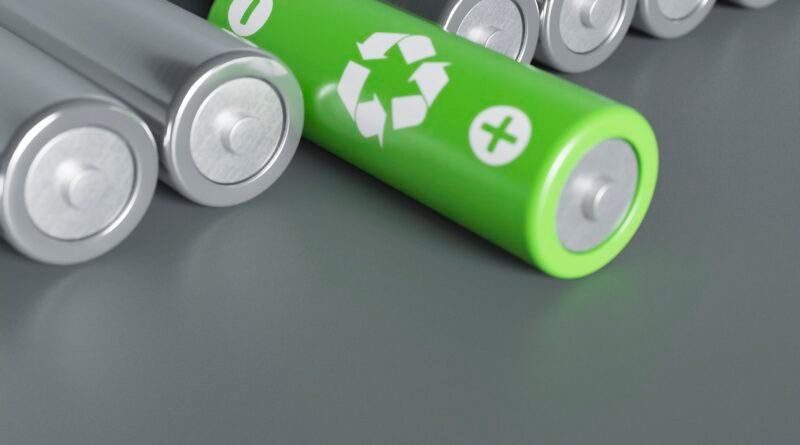Sodium-Ion Batteries: Revolutionising Renewable Energy and Changing the Rules
As society progresses towards a fossil fuel-free future, there’s a noticeable surge in the demand for batteries. However, this surge also brings about concerns regarding the scarcity of key elements like lithium and cobalt, crucial components in widely used battery technologies. An alternative solution lies in sodium-ion batteries, which rely on readily available resources such as table salt and biomass sourced from the forestry sector.
Researchers from Chalmers University of Technology, Sweden, have demonstrated that these sodium-ion batteries offer a comparable climate impact to their lithium-ion counterparts, all while eliminating the risk of material depletion.
Rickard Arvidsson, Associate Professor of Environmental Systems Analysis at Chalmers, emphasizes the significance of choosing appropriate battery materials for transitioning to renewable energy and a fossil-free transportation system.
The European Commission’s Critical Raw Materials Act forecasts a substantial rise in demand for crucial battery materials as EU nations shift towards renewable energy and electric vehicles. This green transition necessitates increased local battery production and other fossil-free technologies, highlighting the importance of a consistent supply of raw materials. However, such production faces the challenge of potential supply disruptions due to the limited geographic sources of these materials.
Arvidsson explains the bottleneck posed by lithium, which impedes the rapid production of lithium-based batteries needed for electric vehicles, with concerns about the long-term depletion of lithium deposits. Additionally, the concentration of critical battery materials like lithium and cobalt in a few global locations poses a risk to the overall supply chain.
Sodium-ion Batteries offer Promising Technology
Advancements in battery technology are rapidly progressing in the pursuit of the next era of sustainable energy storage. This evolution aims to deliver solutions with extended lifespans, high energy densities, and streamlined production processes. At Chalmers University, the research team delved into sodium-ion batteries as an alternative to lithium-ion ones, leveraging the abundance of sodium, a fundamental element found abundantly in common table salt.
In their recent study, they conducted a comprehensive life cycle assessment of these batteries, evaluating their overall environmental and resource footprint from raw material extraction to manufacturing.
Rickard Arvidsson explains, “Our findings indicate that sodium-ion batteries outperform lithium-ion counterparts in terms of minimizing mineral resource scarcity impact while displaying comparable climate impact. Depending on the scenario considered, their carbon dioxide equivalents range from 60 to just over 100 kilograms per kilowatt hour theoretical electricity storage capacity, lower than previously estimated for this type of sodium-ion battery. It signifies a promising advancement in battery technology.”
Furthermore, the researchers pinpointed several strategies with the potential to further diminish climate impact, notably the development of environmentally superior electrolytes, which contribute significantly to the battery’s overall environmental footprint.
Also Read About –
The Quantum Climate Opportunity: Modeling a Sustainable Future
Calpine to launch first battery energy storage project at 680-MW California BESS site in 2024
Green Energy requires Energy Storage
Today, experts anticipate the utilization of sodium-ion batteries for stationary energy storage in the electricity grid, and with ongoing advancements, it’s likely they will also find application in electric vehicles in the future.
Rickard Arvidsson states, “Energy storage is crucial for expanding wind and solar power. Considering that batteries are the primary storage solution, the key question is their composition. Increased demand for lithium and cobalt could hinder this development.”
A significant advantage of this technology lies in the abundance of materials used in sodium-ion batteries, which are globally available. One electrode in these batteries, the cathode, utilizes sodium ions as a charge carrier, while the other electrode, the anode, comprises hard carbon. Chalmers researchers have investigated the potential to produce hard carbon from biomass in the forest industry. From both production processes and geopolitical perspectives, sodium-ion batteries offer an alternative that could expedite the transition to a fossil-free society.
Arvidsson adds, “Batteries crafted from abundant raw materials could mitigate geopolitical risks and reduce dependencies on specific regions, benefiting both battery manufacturers and countries.”
More About the Study
The study conducts a prospective life cycle assessment of two different sodium-ion battery cells, calculating their environmental and resource impacts from raw material extraction to battery cell manufacturing. The study’s functional unit is 1 kWh theoretical electricity storage capacity at the cell level.
Both types of battery cells primarily rely on abundant raw materials. The anode comprises hard carbon sourced from either bio-based lignin or fossil raw materials, while the cathode consists of “Prussian white” (composed of sodium, iron, carbon, and nitrogen). The electrolyte contains a sodium salt. Production is modeled to reflect future large-scale scenarios, akin to current gigafactories producing lithium-ion batteries.
The study examines two different electricity mixes and two allocation methods – one distributing climate and resource impacts among coproducts based on mass, and another allocating all impacts to the main product (the sodium-ion battery and its components and materials).
Source – https://scitechdaily.com/




